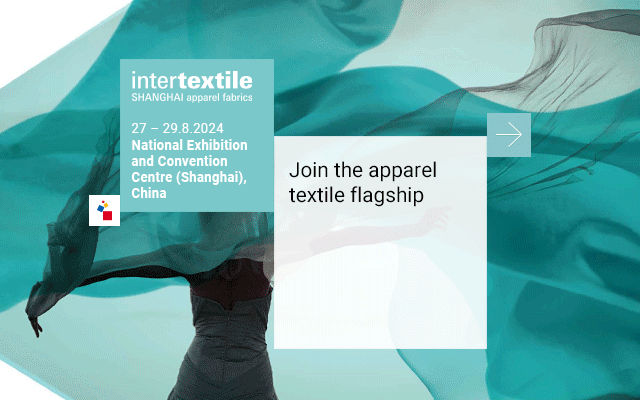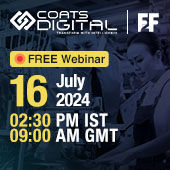'Corporate apparel' - the term brings to mind images of conservative business suits and plain ties, as well as conservative skirts and formalblouses, with very formal-looking accessories. This, however, is fast changing.Corporate apparel is no longer boring or staid, but it is now trendier, morecolourful and more comfortable. This article seeks to explore the evolution of corporateapparel as well as the trends that are emerging in the same all over the world.
Evolution of Corporate Apparel
The traditional clothing that has always been accepted ascorporate attire consists of a button down shirt and a formal skirt or trousers for women. Formales, formal trousers and button-down shirts are the most preferred traditional corporate garb. Business suits for both men and women are also acceptable,generally with the inclusion of a tie in case of men. In case of skirts andsuits, plain ones in dark colours are considered acceptable. Talking aboutformal shirts, plain shirts in light colours as well as those with stripes andchecks are the most preferred. In India, the salwar kameez and saree are verywidely preferred by working women, and it is largely accepted as corporateattire.
The concept of 'Casual Fridays' emerged in the late 1950s,initiated by USA and Canada. People started dressing in casual clothes insteadof traditional workwear on Fridays. Over time, this trend got modified, anddifferent organizations began setting up different days on which theiremployees could wear casual clothes to work.
It was in the 1970s that the concept of 'business casuals'emerged. However, it became really popular only in the 1990s. Business casuals conveythat business is not all about seriousness and being highly formal, but one canfeel comfortable and at home as well at work. There is no fixed look forbusiness casual; the look of casual business clothes differs from oneorganization to another. It is necessary that business casuals be less formalthan the traditional suit-tie-and-business-shirt office wear and should beneat. At the same time, it should not be too casual. It should suit the kind ofatmosphere of the organization. Business casuals are very much in in the worldof work clothes today. There are a few organizations, however, that still prefer to stick to traditional formal work wear.
Corporate Apparel Prerequisites
Whether an organization adopts a highly traditional approach to clothing for their staff or a more relaxed one, there are a few general prerequisites for selecting a particular garment as corporate apparel. These can be stated asunder:
- 'Decency' and not 'fashion' is the first priority in case of corporate apparel. Business clothing, especially business casuals, has to strike the right balance between comfort and decorum. At the same time, it has to look smart.
- Usually, in organizations where there is no company-specific workwear provided, a formal dressing style is adopted.
- Corporate apparel need not be very expensive, but it should be clean and well maintained. It should be free of wrinkles.
- Corporate apparel should be a reflection of a person's job profile. For instance, the apparel for a manager should be designed in a different manner from that for his subordinates.
- The apparel selected for work should suit the climate of the place where the organization is located.
- Corporate apparel should be suitable to the kind of atmosphere prevalent within the organization.
- Comfort is a very important aspect of corporate apparel. The fabric and the pattern used should be such that it provides comfort to the wearer.
- Accessories used along with corporate apparel, such as jewellery and wristwatches, should be subtle and not attract attention.
Recent Trends in Corporate Apparel
With the passage of time, corporate apparel is becoming more comfortable and relaxing, and the patterns are also becoming a bit less conservative. Contemporary trends are also now taken into consideration these days in the designing of corporate apparel.
There are a few trends that have been recently emerging in the world of corporate apparel of late. The first one is that several organizations are going in for company-specific workwear for their employees, with the organizational logo on it. Company-specific workwear can be in any form, as deemed fit by the organization - shirts and trousers, a skirt and blouse, a saree or any other dress form. The logo of the organization can be either embroidered or laser-etched on the garments. Some companies prefer to go for clothing with stripes or checks for designing organizational workwear. Companies in the hospitality industry might go on for colourful clothing or floral prints for their staff's work gear.
Another trend that is picking up all over the world is that of eco-friendly corporate apparel or green corporate apparel. It refers to work wear that has been produced using eco-friendly or sustainable materials and processes, in such a way that damage to the environment is nil or minimal. As awareness goes on rising about the concept of social responsibility and the ill effects of ecological damage, the trend of designing green corporate wear is also gaining gradual acceptance.
Whether you are an organizational head looking to form a suitable dress code for your staff or a corporate employee on the lookout for something to wear to office, rest assured that there is a lot to choose from!
References:
Picture Courtesy:
Recent Trends in Corporate Apparel
With the passage of time, corporate apparel is becoming more comfortable and relaxing, and the patterns are also becoming a bit less conservative. Contemporary trends are also now taken into consideration these days in the designing of corporate apparel.
There are a few trends that have been recently emerging in the world of corporate apparel of late. The first one is that several organizations are going in for company-specific workwear for their employees, with the organizational logo on it. Company-specific workwear can be in any form, as deemed fit by the organization - shirts and trousers, a skirt and blouse, a saree or any other dress form. The logo of the organization can be either embroidered or laser-etched on the garments. Some companies prefer to go for clothing with stripes or checks for designing organizational workwear. Companies in the hospitality industry might go on for colourful clothing or floral prints for their staff's work gear.
Another trend that is picking up all over the world is that of eco-friendly corporate apparel or green corporate apparel. It refers to work wear that has been produced using eco-friendly or sustainable materials and processes, in such a way that damage to the environment is nil or minimal. As awareness goes on rising about the concept of social responsibility and the ill effects of ecological damage, the trend of designing green corporate wear is also gaining gradual acceptance.
Whether you are an organizational head looking to form a suitable dress code for your staff or a corporate employee on the lookout for something to wear to office, rest assured that there is a lot to choose from!
References:
Picture Courtesy:














Comments